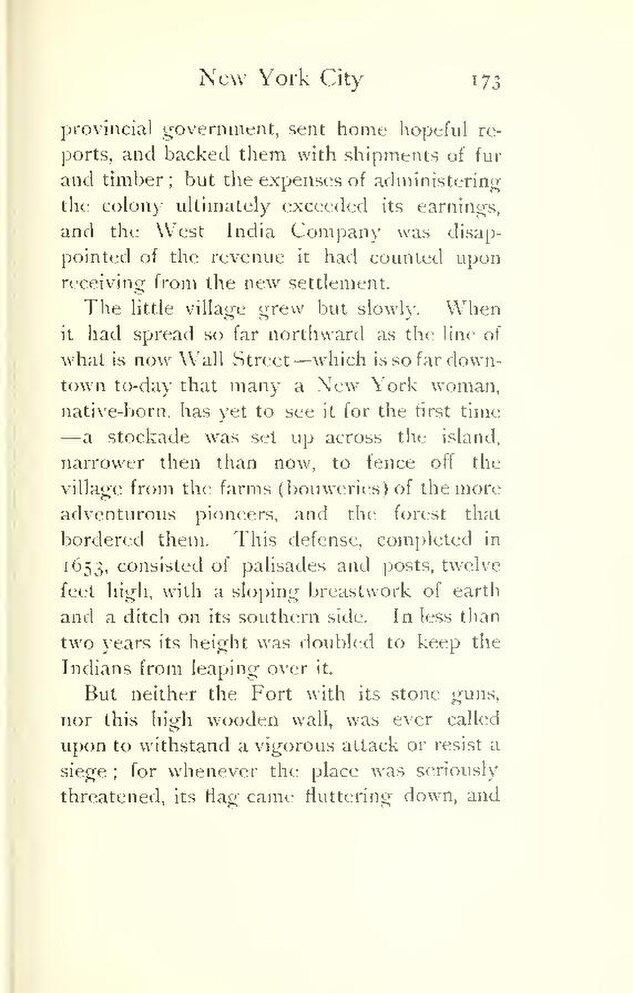provincial government, sent home hopeful reports, and backed them with shipments of fur and timber; but the expenses of administering the colony ultimately exceeded its earnings, and the West India Company was disappointed of the revenue it had counted upon receiving from the new settlement.
The little village grew but slowly. When it had spread so far northward as the line of what is now Wall Street—which is so far down-*town to-day that many a New York woman, native-born, has yet to see it for the first time—a stockade was set up across the island, narrower then than now, to fence off the village from the farms (bouweries) of the more adventurous pioneers, and the forest that bordered them. This defense, completed in 1653, consisted of palisades and posts, twelve feet high, with a sloping breastwork of earth and a ditch on its southern side. In less than two years its height was doubled to keep the Indians from leaping over it.
But neither the Fort with its stone guns, nor this high wooden wall, was ever called upon to withstand a vigorous attack or resist a siege; for whenever the place was seriously threatened, its flag came fluttering down, and
